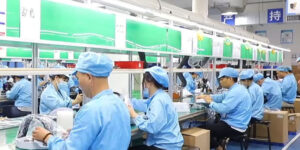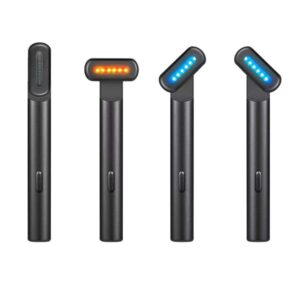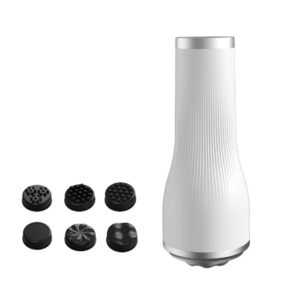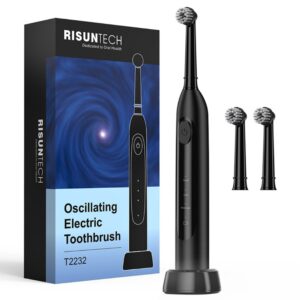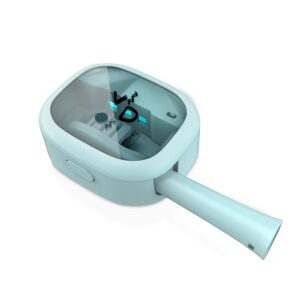Summary
Body care tech devices represent a significant evolution in the beauty and wellness industry, combining advanced technology with personalized skincare solutions to enhance consumer self-care routines. These innovations encompass a wide range of tools, including smart skincare gadgets, personalized skincare tools, and eco-friendly innovations, catering to diverse skin concerns and preferences. As the market for beauty tech devices is projected to reach $12.8 billion by the early 2020s, their rise reflects a cultural shift influenced by social media and the growing desire for accessible, effective beauty solutions that can be used in the comfort of one’s home.
The integration of artificial intelligence (AI) and data analytics into body care technology has revolutionized the user experience, allowing for tailored recommendations and real-time skin health monitoring. Smart skincare devices, such as LED light therapy tools and microcurrent facial toning gadgets, not only promise professional-quality results but also empower users to take control of their skincare journeys. This trend is further complemented by the emergence of community engagement platforms where individuals can share experiences and advice, fostering a supportive network focused on skincare health and wellness.
Notably, the growth of body care tech devices has sparked discussions around sustainability and ingredient transparency, pushing brands to adopt eco-friendly practices and provide clearer information about product contents. While this focus on sustainability resonates with consumers, challenges remain, such as high initial costs and safety concerns regarding the proper usage of these advanced tools. Nevertheless, the continued innovation in body care technology signals a promising future, with expectations for ongoing growth and the potential for deeper integration of beauty and wellness solutions in consumer lifestyles.
Table of Contents
History of Body Care Technology
Early Innovations in Beauty
The history of body care technology can be traced back to ancient civilizations, where basic tools and natural ingredients were employed for personal grooming and aesthetic enhancement. As societal standards of beauty evolved, so too did the technologies utilized to achieve these ideals. The modern beauty industry, which began to take shape in the 20th century with the rise of products like lipstick, mascara, and nail polish, has been heavily influenced by technological advancements. Innovations such as portable mirrors and motion pictures played pivotal roles in the popularization of cosmetics, allowing individuals to replicate the looks of their favorite film stars.
Technological Advancements in the 21st Century
In recent years, the beauty industry has experienced a dramatic shift due to technological innovation. The integration of advanced materials and formulations has enabled the development of body care devices that promise greater efficacy and personalization. For example, the emergence of beauty tech products, such as the Dyson Airwrap, illustrates a growing trend where consumers seek devices that offer professional-quality results at home. This desire for effective and specialized beauty tools is reshaping purchasing decisions within the body care sector.
The Rise of Beauty Devices
By the early 2020s, the market for beauty devices, including those targeting body care, was projected to reach $12.8 billion. This growth has been fueled by a culture increasingly influenced by digital media and social platforms, leading to a heightened emphasis on achieving idealized beauty standards. The development of smart beauty devices, such as electronic skin care tools and smart mirrors, reflects the industry’s pivot toward a more connected and personalized consumer experience. Additionally, recent advancements in artificial intelligence and data analytics have further transformed the landscape of body care technology, enabling brands to create tailored solutions that cater to individual preferences and needs.
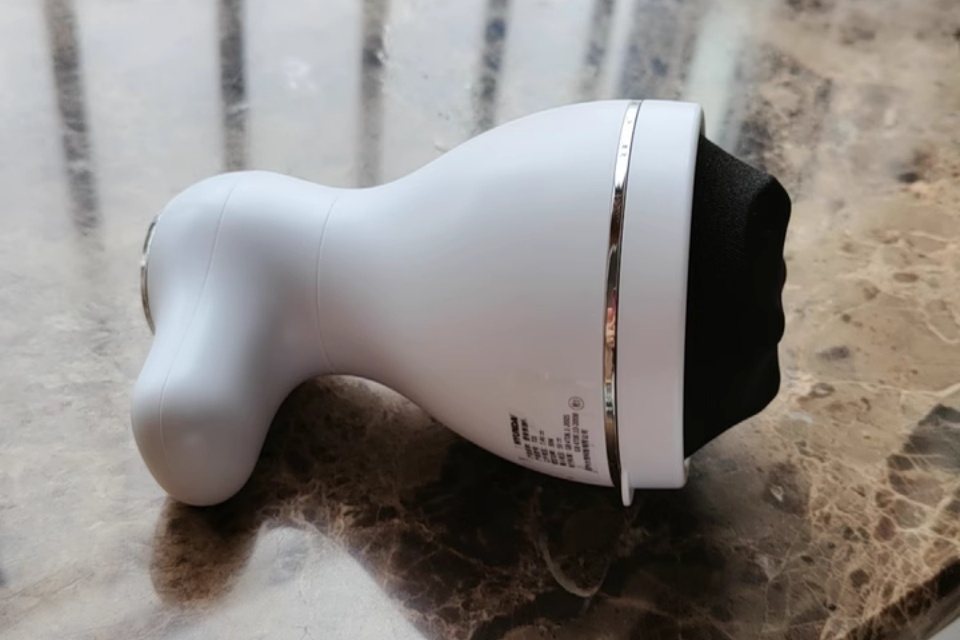
Types of Body Care Tech Devices
Body care tech devices have emerged as essential tools in the beauty and wellness industry, leveraging advanced technology to enhance skincare routines and promote overall skin health. These devices can be categorized into several types, each designed to address specific skin concerns or enhance the user experience in personal care.
Smart Skincare Gadgets
Smart skincare devices integrate technology with personalized skincare, offering tailored solutions for various skin issues.
LED Light Therapy Devices: These devices utilize specific wavelengths of LED light to target concerns like acne and aging. Blue light helps combat acne-causing bacteria, while red light encourages collagen production and skin repair, providing a non-invasive way to improve skin appearance.
Microcurrent Facial Toning Devices: Utilizing low-level electrical currents, these devices stimulate facial muscles, effectively providing a workout for the skin. This method aids in tightening, smoothing fine lines, and enhancing facial contours, making them popular for users seeking a non-surgical anti-aging solution.
Ultrasonic Skin Scrubbers: By using high-frequency ultrasonic waves, these devices deeply cleanse and exfoliate the skin while promoting better absorption of skincare products. They are effective in removing impurities, leading to a brighter complexion.
Personalized Skincare Tools
The advent of personalized skincare technology allows for a more tailored approach to beauty routines:
Handheld Skin Analysis Tools: These devices analyze various skin conditions, providing users with personalized data on hydration, sebum levels, and pore size. Innovations in AI and machine learning enhance the accuracy of these tools, helping users customize their skincare routines effectively.
Wearable Skincare Technology: Emerging wearable devices, such as patches that deliver active ingredients throughout the day, are designed to integrate skincare benefits into daily life. These innovations promise convenience without compromising efficacy.
3D Printed Skincare: This technology enables the creation of personalized skincare products or masks that are tailored to the individual’s skin contours and needs, marking a significant advancement in customized beauty solutions.
Eco-Friendly Innovations
In addition to personal care benefits, body care tech devices increasingly focus on sustainability:
Biodegradable Sensors: These temporary sensors dissolve after use, reducing waste and minimizing environmental impact.
Solar-Powered Medical Devices: Designed for remote healthcare, these energy-efficient tools help reduce energy consumption while delivering essential health services.
Recycled Smart Fabrics: In the sports and fitness realm, smart clothing made from recycled materials not only monitors performance but also aligns with sustainable practices, setting new standards for eco-conscious athleticism.
As technology continues to evolve, the landscape of body care tech devices is expected to grow, offering consumers more sophisticated and effective solutions tailored to their unique skincare needs. This integration of technology into personal care not only enhances efficacy but also empowers individuals to take a proactive approach to their skin health.
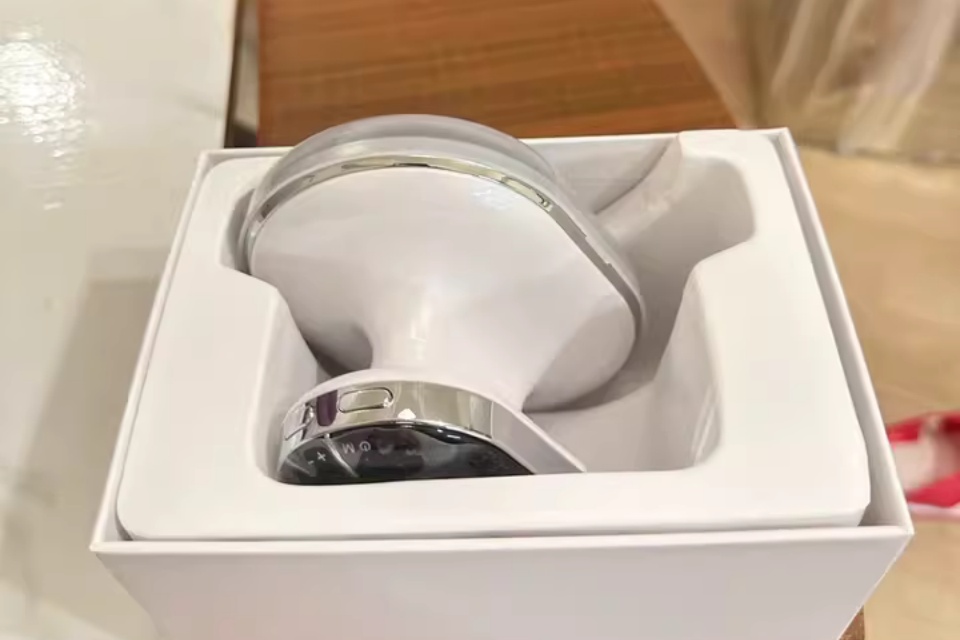
Benefits of Body Care Tech Devices
Enhanced Personalization
Body care tech devices offer significant benefits through enhanced personalization, allowing consumers to tailor their skincare routines to their unique needs. AI-driven tools can analyze skin conditions and provide personalized recommendations, fostering a sense of ownership among users who can experiment with DIY skincare solutions. As consumers increasingly seek individualized approaches, these devices facilitate targeted research into how various ingredients affect specific skin types, ultimately leading to more effective products.
Community Engagement
These devices also play a crucial role in building online communities centered around skincare. Users can connect with others facing similar skin concerns, share experiences, and seek advice, fostering a supportive environment that encourages exploration of new products and routines. Such community-building not only enhances user engagement but also empowers individuals to take charge of their skin health.
Proactive Health Management
Body care tech devices enable proactive health management by allowing users to monitor their skin health in real-time. With early detection capabilities, these devices can alert users to changes that may indicate potential issues, facilitating early intervention that can prevent more severe conditions. Moreover, understanding how daily habits influence skin health empowers users to make informed lifestyle choices, such as diet adjustments or skincare product selection.
Eco-Friendly Innovations
The integration of eco-friendly materials in body care tech devices marks a shift towards sustainability in the industry. Innovative materials that harness energy from indoor light sources are becoming more common, reflecting a growing commitment to environmentally responsible practices. This focus on sustainability not only reduces the ecological footprint of beauty devices but also aligns with consumer desires for products that support a greener future.
Improved User Experience
User experience is central to the success of body care tech devices. Features like intuitive interfaces and comfort are essential for ensuring users can easily access and interpret their skin health data. By offering adjustable settings and compatibility with mobile applications, manufacturers can cater to the diverse needs of consumers, making technology accessible and engaging.
Support for Health Campaigns
Lastly, body care tech devices contribute to broader public health initiatives. By aggregating data from users, these devices can provide valuable insights for public health research, identifying trends and risk factors related to skin conditions. Furthermore, they can support health campaigns aimed at skin cancer prevention and awareness, encouraging individuals to monitor their UV exposure.

Market Trends
The body care tech devices market is experiencing a dynamic evolution influenced by several key trends that are reshaping consumer engagement and product offerings.
Growth of Beauty Tech
The beauty tech market is projected to grow substantially, with estimates indicating an increase from $68.87 billion in 2024 to $79.87 billion in 2025, reflecting a compound annual growth rate (CAGR) of 16.0%. By 2029, the market is anticipated to reach approximately $130.93 billion, driven by factors such as increased consumer awareness around clean beauty and the impact of social media on beauty trends.
Integration of Technology
Significant advancements in technology, particularly the integration of artificial intelligence (AI) and Internet of Things (IoT) devices, are transforming how consumers approach self-care and cosmetics. Innovations like AI-driven skin analysis and personalized beauty recommendations are becoming commonplace, enabling consumers to make informed choices tailored to their specific needs. This technological transformation not only enhances user experience but also boosts the overall perceived value of body care products.
Consumer Behavior Shifts
Empirical research indicates that consumer purchasing behavior is increasingly influenced by the perceived value of online shopping experiences. As consumers become more focused on both the utilitarian and hedonic aspects of their purchases, brands are adapting their strategies to provide enhanced value propositions through improved digital retail experiences and product functionality. The emphasis on visual appeal and technological convenience further drives the purchasing intent, leading to an increase in impulsive buying behaviors.
Sustainability and Clean Beauty
With a growing demand for sustainable and clean beauty solutions, consumers are favoring brands that prioritize eco-friendly practices and ingredients. This trend is influencing product development, as manufacturers are investing in research and innovation to create products that align with consumer values related to environmental responsibility.
Market Expansion and Competition
The market is witnessing heightened competition as major players like L’Oréal, Philips, and others engage in strategic partnerships and product innovation to maintain their market share. The ongoing expansion of e-commerce platforms has facilitated easier access to a wider range of beauty tech devices, enhancing brand visibility and consumer choice.

Challenges and Considerations
High Initial Investment
The adoption of consumer beauty devices often faces significant barriers due to the high initial investment required for advanced technology. Many potential buyers consider these devices unaffordable, with over 43% citing cost as a critical barrier to purchase. This is particularly evident in price-sensitive regions, where the adoption rate can be up to 26% lower compared to high-income areas, limiting market penetration and overall growth of the sector.
Safety Concerns
Safety remains a paramount issue in the beauty device market. Misuse or improper application of these devices can lead to skin irritation and other complications. Some devices, particularly those intended for home use, can pose serious risks if not used correctly. For example, needle-free devices like hyaluron pens have been deemed unsafe and may cause significant complications. The lack of professional training for users can exacerbate these risks, highlighting the importance of consumer education before device usage.
Regulatory Hurdles
The regulatory landscape for cosmetic devices is complex and varies significantly across regions. Compliance with differing standards can be challenging for manufacturers. Harmonizing regulations globally poses difficulties due to diverse priorities, cultural attitudes, and scientific interpretations surrounding cosmetic safety and efficacy. Moreover, stringent regulations can hinder product development and market entry for new innovations.
Competition and Market Saturation
The beauty device market is characterized by intense competition, with numerous brands and products vying for consumer attention. This saturation can make it difficult for new entrants to establish themselves and gain market share. The presence of counterfeit products further complicates the landscape, posing risks to consumers and undermining the credibility of legitimate brands.
Ingredient Transparency
A significant challenge in the beauty industry is the lack of transparency regarding ingredients used in products. Many consumers find it difficult to make informed choices due to the use of a generic term or trade names on labels, which can obscure the true nature and potential risks of certain ingredients. This lack of clarity can lead to mistrust among consumers, particularly as awareness grows regarding the safety and efficacy of beauty products.
Limited Consumer Education
The effectiveness and proper usage of beauty devices hinge on consumer education. A substantial portion of users report being unsure about the correct application methods, which can lead to misuse and disappointment with results. Approximately 31% of users are unaware of how to effectively use these devices, and nearly 22% avoid purchasing due to insufficient guidance. This knowledge gap is especially pronounced in rural areas, contributing to a 28% adoption gap compared to urban centers. Addressing these educational deficiencies is crucial for enhancing user satisfaction and expanding market reach.
Sustainability in Body Care Tech
The body care tech industry is increasingly aligning itself with sustainable practices, responding to a growing consumer demand for eco-friendly products. Innovations in technology are not only enhancing personal care but also prioritizing environmental responsibility.
Eco-Friendly Materials and Energy Efficiency
A significant trend in body care tech is the integration of biodegradable materials and energy-efficient technologies. For instance, many skincare devices are now being designed with rechargeable solutions that minimize waste and energy consumption. Companies are focusing on using organic and ethically sourced materials to create products that support both environmental sustainability and social responsibility, thereby reducing pollution and conserving natural resources.
Innovative Packaging Solutions
Packaging waste is a critical concern in the beauty industry, and body care tech brands are addressing this by adopting innovative and sustainable packaging solutions. Many brands are shifting towards materials that are recyclable, reusable, or biodegradable, significantly reducing the reliance on single-use plastics. This includes mono-material packaging, which simplifies recycling processes and enhances the efficiency of recycling systems.
The Role of Technology in Sustainable Practices
Advancements in technology are facilitating the creation of eco-friendly body care devices. For instance, wearables made from recycled materials are gaining traction, while kinetic energy-powered devices help to reduce the need for traditional power sources. Additionally, research into energy-harvesting wearables is paving the way for devices that require less frequent charging, thus further contributing to energy efficiency.
Future Prospects and Consumer Impact
As the industry continues to evolve, the emphasis on sustainability in body care tech is expected to grow. This includes the rise of waterless beauty products and upcycled materials that utilize byproducts from other industries. The trend reflects a broader movement towards conscious consumerism, where purchasing decisions have implications beyond individual benefits, influencing global environmental health. As consumers increasingly prioritize eco-friendly options, the body care tech industry will likely innovate further to meet these demands, ensuring that sustainability remains at the forefront of product development.
Future Outlook
The future of body care technology is anticipated to be transformative, with projections indicating a Compound Annual Growth Rate (CAGR) of X% from 2025 to 2033, leading to sales surpassing XXX million units by 2033. This growth is expected across multiple segments, including facial cleansing devices, skin tightening devices, and hair removal technologies, among others. Established products like facial cleansing devices are likely to maintain a strong market presence, while newer innovations such as micro-needling devices are expected to exhibit significant growth potential as consumer preferences shift towards advanced solutions.
A pivotal trend shaping this future is the integration of artificial intelligence (AI) and augmented reality (AR) into personal care routines. These technologies are revolutionizing consumer engagement by enabling personalized beauty experiences and smart consultations. As AI-driven tools become more sophisticated, they are projected to influence up to 70% of customer interactions within the beauty industry by 2027, with the global AI market in beauty anticipated to reach $13.4 billion by 2030. Furthermore, brands that harness AI for product development can create tailored offerings that resonate with consumer demands, leading to enhanced operational efficiency and agility.
In addition, the convergence of beauty and wellness is becoming increasingly pronounced. Consumers are seeking holistic solutions that address both external beauty and overall well-being, driving demand for technologies that deliver integrated skincare solutions. As companies adapt to these shifts, those that prioritize authenticity, science, and genuine value are likely to succeed in a rapidly evolving luxury beauty landscape.
Moreover, the rise of e-commerce platforms continues to enhance market accessibility, providing consumers with a broader range of products and brands at their fingertips. As beauty tech innovations like virtual try-on capabilities and personalized recommendations become standard, the industry will see an acceleration in consumer engagement and satisfaction, ultimately paving the way for sustained growth in body care technology.
Report Coverage
The discussion on body care technology devices highlights the innovative strides being made within the beauty industry, particularly focusing on how these devices enhance personal care routines. With an increasing emphasis on self-care, many consumers are turning to advanced tools that promise not only convenience but also effective results.
Key Insights
Recent evaluations emphasize the transformative impact of body care tech devices on beauty practices. For example, the rise of tools like gua sha stones, which are celebrated for their ability to boost circulation and sculpt facial features, signifies a shift towards integrating traditional beauty methods with modern technology. As noted by beauty contributor Iman Balagam, these devices can significantly enhance facial definition when used consistently within a daily routine.
The Lipstick Maker
Among the various technologies gaining traction, devices designed for facial sculpting, such as gua sha stones, have garnered notable attention. These tools, made from materials like jade, rose quartz, black obsidian, or amethyst, offer multiple benefits, including reducing puffiness and aiding lymphatic drainage. Users are encouraged to prepare their skin with oil or serum prior to using these tools to maximize their effectiveness. The portability of these devices also adds to their appeal, allowing users to maintain their beauty routines on the go. As body care tech continues to evolve, it opens up exciting possibilities for personal beauty regimens.


